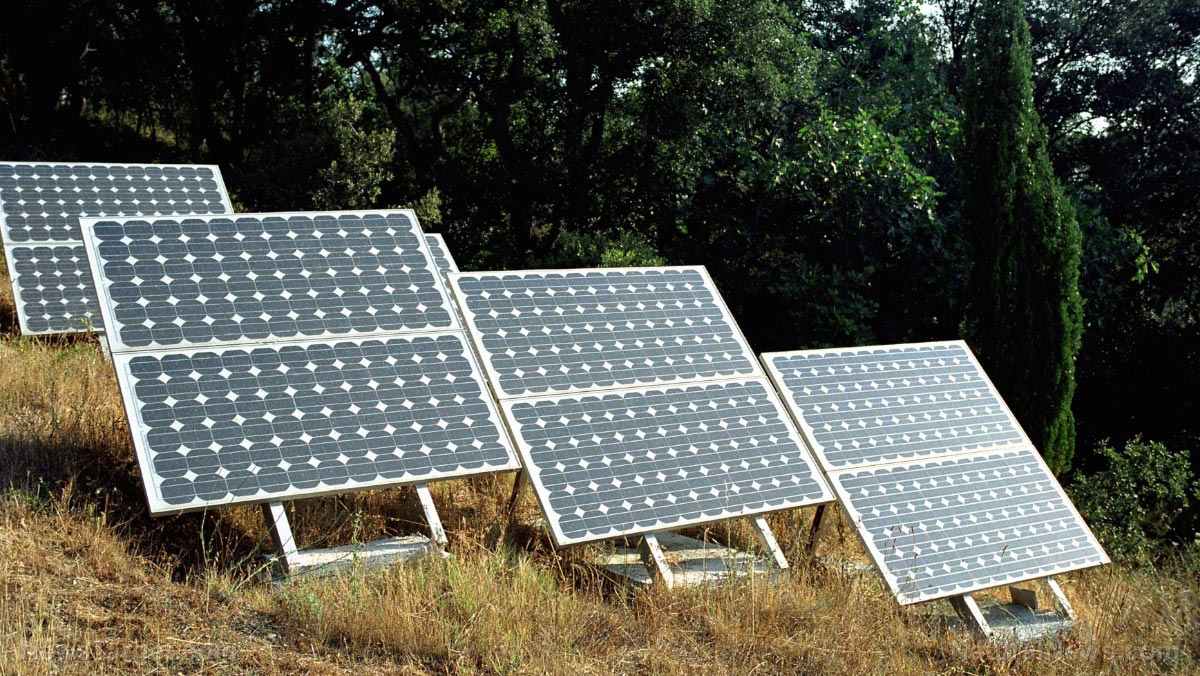World’s first solar-powered railway line now operating in the UK: Renewable power source may be cheaper than grid-derived electricity, say experts
09/11/2020 / By Virgilio Marin

The world’s first solar-powered railway line is in working order in the United Kingdom. Its innovators conducted a pilot test using Network Rail’s Wessex route and deemed the technology fully functional.
The Wessex route was directly powered by solar energy supplied by a nearby solar farm near the town of Aldershot, Hampshire county. Solar power has been used before to power train. But the railway marks the first time power grids were completely bypassed.
Riding Sunbeams, a group of innovators who developed the solar-powered railway, said that a renewable energy source will not only be environmentally friendly – it also offers a more affordable alternative to fossil fuel.
“Helping to get the railways off fossil fuels in this way will cut running costs and benefit local communities at the same time as helping to tackle the climate crisis,” said Leo Murray, director of Riding Sunbeams.
By the end of 2020, the team plans to build and connect the world’s first full-scale community- and commuter-owned solar farm to U.K. railways.
Making solar-powered railway possible
The project is based on earlier research from the climate change charity group Possible, then-known as 10:10 Climate Action. The study was conducted by experts from the Imperial College London, Community Energy South and Turbo Power Systems, some of whom are part of Riding Sunbeams. They investigated whether a solar farm could directly power a railway to provide traction power to the trains.
They found that solar photovoltaics installed near the railway line can be connected directly to the electrified track and completely bypass power grids. Solar photovoltaics are solar panels that are capable of directly converting light into electrical power. These are the solar panels that are typically built in a calculator.
The solar-powered railway had its first test run in 2019. The team built a solar farm composed of 100 solar panels and connected it to the Wessex route. The railway operated on 30 kilowatts of energy; train signaling, lights and the track itself came alive with solar energy.
The team recorded no system malfunction and deemed the pilot testing a success. They added that the technology has a huge potential in the U.K. and in many countries across the globe.
In the U.K. alone, solar farms could power 20 percent of the Merseyrail network in Liverpool and 15 percent of commuter routes in Kent, Sussex and Wessex. Government subsidy will not be needed as the technology is inexpensive, said Riding Sunbeams. The solar farms could also be community- and commuter-owned, which means that profits from railway services will return to local community funds. Furthermore, a solar-powered railway represents a perfect synergy between solar power and railways.
“Matchmaking the UK’s biggest electricity user, the railways, with the nation’s favorite energy source, solar power, looks like the start of the perfect relationship,” said Murray.
Riding Sunbeams is currently partnered with the Network Rail to hone solar power technology. Researchers from the University of Birmingham are also contributing to the project by looking into the feasibility of plugging much larger solar rigs to railway networks in the U.K. (Related: Scientists use caffeine to give solar cells a unique energy boost.)
“We have ambitions to roll this technology out further across the network should this demonstrator project prove successful so we can deliver a greener, better railway for our passengers and the wider public,” said Stuart Kistruck, director of route asset management for Network Rail’s Wessex Route.
Aside from solar-powered railways, hydrogen trains have also been developed in the U.K. recently. These trains do not emit any greenhouse gases, only water vapor. Researchers developed a hydrogen drive system that can be fitted to any old or new train. This could save a lot of resources as existing models do not have to be replaced with new ones to accommodate hydrogen equipment.
Learn more about transportation innovations using solar power at SolarPanels.news.
Sources include:
Tagged Under: future tech, future tech development, Greenhouse Gas, hydrogen trains, railway, renewable energy, solar panels, solar power, solar-powered trains, technology, United Kingdom
RECENT NEWS & ARTICLES
COPYRIGHT © 2017 REAL SCIENCE NEWS




















